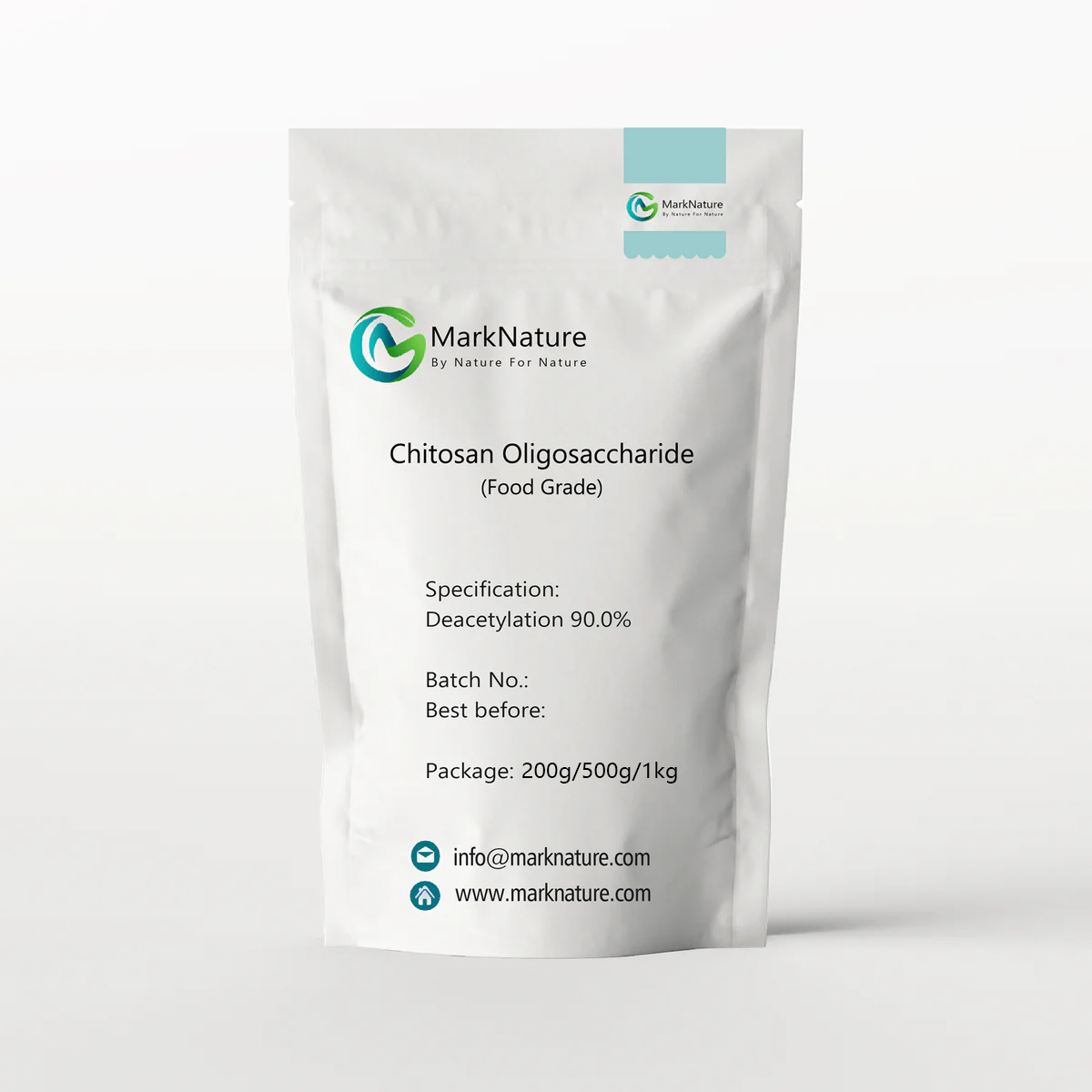Description
Chitosan Oligosaccharide (COS) is a highly bioactive, water-soluble oligosaccharide obtained from chitin through precise enzymatic hydrolysis. With a low molecular weight of approximately 3,000 Da and a degree of polymerization below 20, COS exhibits excellent solubility, stability, and absorption. It is characterized by its alkaline nature and non-thermogenic properties, setting it apart from other carbohydrates. This light yellow powder features a mild odor and slightly sour taste and fully complies with international food-grade standards. COS serves as a functional ingredient in nutraceutical, pharmaceutical, agricultural, and biotechnological applications, supporting health and sustainability through nature-derived innovation.
Specification:
Appearance: Light yellow powder
Taste and Odor: Characteristic odor, slightly sour taste
Impurities: No visible foreign matter
Molecular Weight (Da): 340–1,610
Degree of Deacetylation (DAC): ≥90.0%
Purity: ≥90.0%
Insoluble Substance: ≤0.5%
pH (1% solution): 5.0–7.0
Moisture: ≤10.0%
Ash: ≤1.0%
Lead (Pb): ≤2 ppm
Arsenic (As): ≤1 ppm
Hexavalent Chromium (Cr⁶⁺): ≤0.5 ppm
Cadmium (Cd): ≤0.4 ppm
Mercury (Hg): ≤0.1 ppm
Source: Crab shell
CAS No.: 148411-57-8
EC No.: 604-631-8
Molecular Formula: (C₆H₁₁NO₄)ₙ
Molecular Weight: ≤3,000 Da
Standard: Food Grade (Enterprise)
Key Features:
1)、Low molecular weight (340–1,610 Da) ensures superior bioavailability and absorption efficiency
2)、High degree of deacetylation (≥90%) and purity for consistent functionality and safety
3)、Degree of polymerization <20 and mildly alkaline nature for stable physiological performance
4)、Non-thermogenic oligosaccharide — does not generate metabolic heat during digestion
5)、Fully water-soluble and easily incorporated into food, beverage, or nutraceutical formulations
6)、Meets stringent food-grade heavy metal and microbiological safety standards
Applications:
1)、Functional foods & nutraceuticals: supports gut microbiota balance, immune modulation, and metabolic regulation
2)、Pharmaceuticals: used as a bioactive carrier in drug delivery and controlled-release formulations
3)、Agriculture: promotes seed germination, enhances root vigor, and strengthens plant disease resistance
4)、Biotechnology: applied in fermentation, enzyme immobilization, and biofunctional material development
5)、Dietary supplements: formulated for digestive health, cholesterol control, and overall wellness

